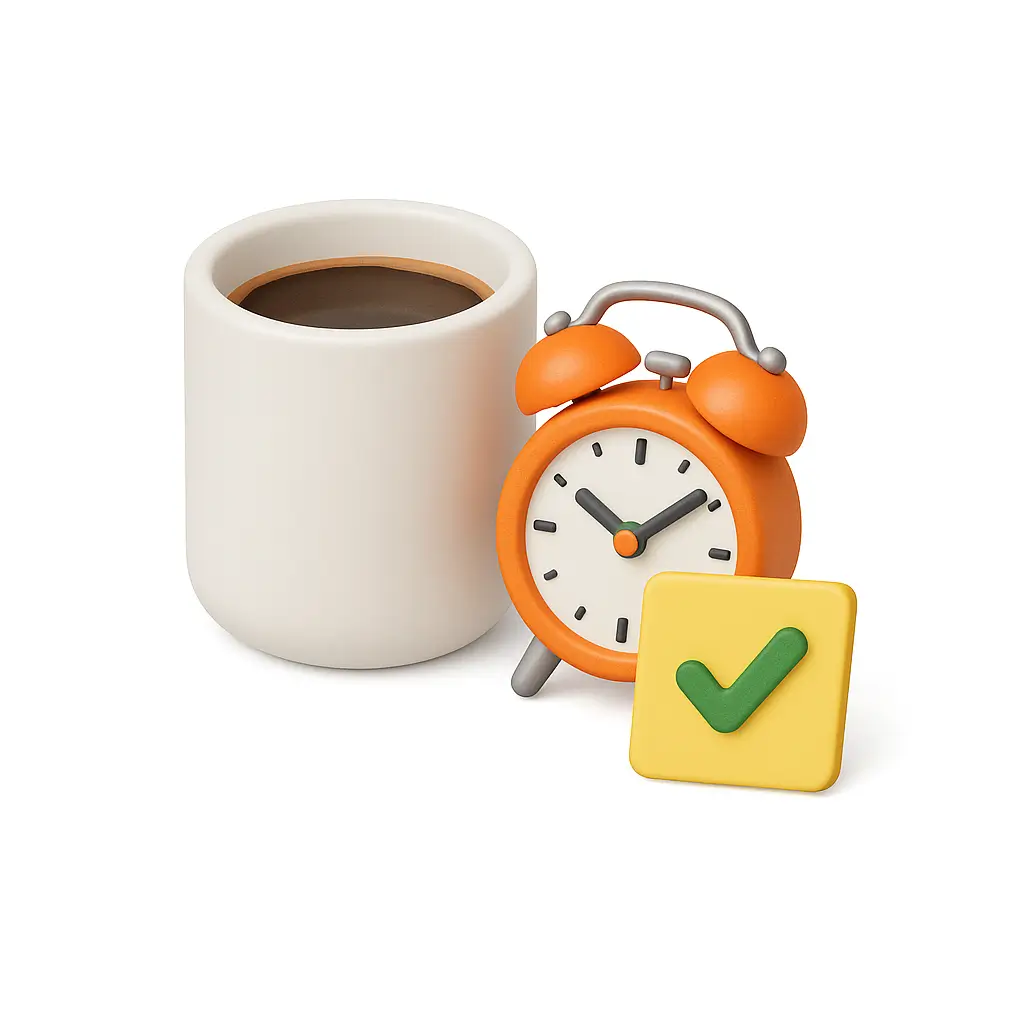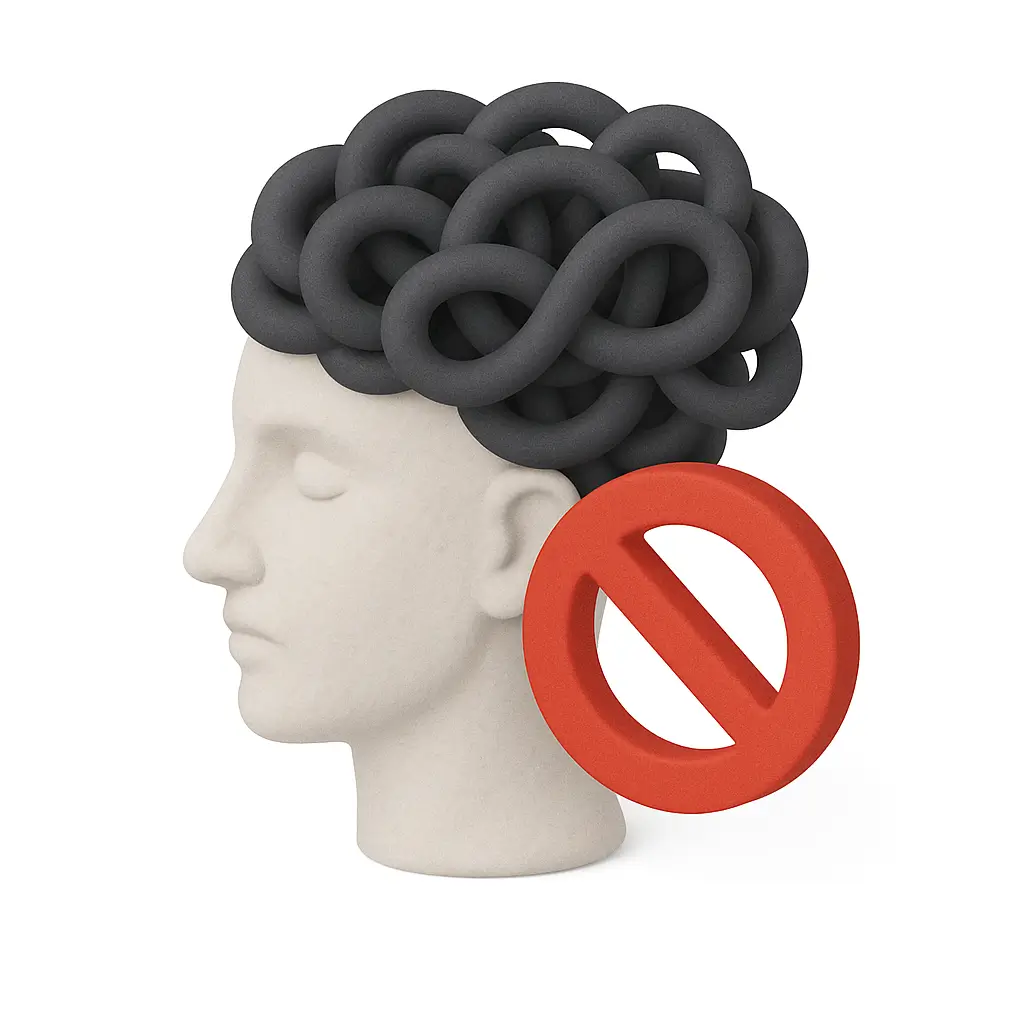Art of Micro-Breaks
Recharge your energy in 2 minutes or less
June 26, 2025 · 4 min read

⚖️ The producitivity paradox
Jake works 10-hour days without stopping. No lunch breaks. No coffee breaks. Just pure, uninterrupted focus.
By 4 PM, he's reading the same email for the third time. His brain feels like molasses.
More hours doesn't equal more productivity. Your brain needs breaks to function at its best.
But who has time for hour-long breaks? That's where micro-breaks come in.
What are micro‑breaks?
Micro-breaks are intentional pauses lasting 30 seconds to 5 minutes. They're designed to reset your mental state without disrupting your workflow.
Think of them as:
- Mental palate cleansers
- Brain circuit breakers
- Cognitive reset buttons
These tiny pauses can dramatically improve your focus, creativity, and energy levels.
Why short breaks work
Your brain operates in cycles. Research shows optimal focus lasts 90-120 minutes before performance drops.
What happens during micro-breaks:
- Stress hormones decrease
- Blood flow to the brain increases
- Neural pathways get a chance to consolidate
- Attention networks reset
Even 30 seconds of intentional rest can restore mental clarity.
Why typical breaks fail
Most people take breaks wrong:
Scrolling social media → Overstimulates your brain
Checking emails → Adds more mental load
Watching videos → Keeps you in passive consumption mode
These activities don't restore energy. They drain it further.
Micro‑break ideas
Movement Breaks (30-60 seconds)
- Stand and stretch your arms overhead
- Do 10 desk push-ups
- Walk to the window and back
- Roll your shoulders backward 5 times
Movement increases blood flow and breaks physical tension.
Breathing Breaks (1-2 minutes)
- 4-7-8 breathing: Inhale for 4, hold for 7, exhale for 8
- Box breathing: 4 counts in, hold 4, out 4, hold 4
- Simple deep breathing: 5 slow, intentional breaths
Controlled breathing activates your parasympathetic nervous system.
Sensory Breaks (2-3 minutes)
- Look out a window at something distant
- Listen to one song with eyes closed
- Feel different textures (stress ball, smooth stone)
- Smell something pleasant (coffee, essential oil)
Engaging different senses gives your visual cortex a rest.
Mental Breaks (1-3 minutes)
- Practice gratitude: List 3 things you appreciate
- Do a quick body scan from head to toe
- Visualize a peaceful place
- Count backward from 100 by 7s
These activities quiet mental chatter and reduce stress.
A simple toolkit
Keep these items at your workspace:
Physical tools:
- Stress ball or fidget toy
- Essential oil roller
- Small plant to look at
- Smooth stone or worry stone
Digital tools:
- Breathing app with short sessions
- Nature sounds playlist
- Timer for break reminders
- Photos of calming scenes
When to take one
Natural Transition Points
- Between meetings
- After completing a task
- Before starting something new
- When switching between projects
Warning Signs You Need a Break
- Reading the same line multiple times
- Making simple mistakes
- Feeling irritated or frustrated
- Physical tension in neck or shoulders
Don't wait until you're exhausted. Prevent fatigue before it starts.
The 20‑20‑20 rule
Every 20 minutes, look at something 20 feet away for 20 seconds.
This simple practice:
- Reduces eye strain
- Prevents headaches
- Gives your brain a micro-reset
- Takes almost no time
Set a gentle reminder to make this automatic.
Build the habit
Week 1: Start Small
Set a timer for every 45 minutes. Take one deep breath when it goes off.
Week 2: Add Movement
Include a 30-second stretch or walk to your breathing break.
Week 3: Experiment
Try different types of micro-breaks. Notice which ones energize you most.
Week 4: Customize
Create your personal micro-break menu based on what works best.
Common mistakes
Making Them Too Long
Keep breaks short. Longer breaks can disrupt your flow state and make it harder to restart.
Using Screens
Avoid phones, computers, or tablets during breaks. Give your eyes and brain a true rest.
Feeling Guilty
Micro-breaks aren't laziness. They're performance optimization. You'll accomplish more, not less.
Skipping Them When Busy
This is when you need breaks most. Two minutes now saves 20 minutes of unfocused work later.
Advanced tips
The Pomodoro Integration
Work for 25 minutes, then take a 2-minute micro-break. Every fourth break, take 15-30 minutes.
The Energy Matching
Choose break types based on your energy level:
- Low energy: Movement breaks
- High stress: Breathing breaks
- Mental fatigue: Sensory breaks
- Overwhelm: Mental breaks
The Meeting Buffer
Build 2-minute buffers between back-to-back meetings. Use this time for breathing or quick stretches.
For different kinds of work
Creative Work
- Doodle for 60 seconds
- Look at inspiring images
- Do gentle neck rolls
- Practice mindful observation
Analytical Work
- Close your eyes and breathe
- Do simple math in your head
- Stretch your hands and wrists
- Look at something green
Communication-Heavy Work
- Practice tongue twisters silently
- Massage your jaw muscles
- Do shoulder blade squeezes
- Drink water mindfully
The compound effect
Individual micro-breaks seem insignificant. But they compound throughout the day:
Morning: Start fresh and focused
Midday: Maintain energy instead of crashing
Afternoon: Stay sharp when others fade
Evening: Leave work feeling energized, not drained
Small investments in rest create massive returns in productivity.
Try this
Today: Set three random alarms. When they go off, take one deep breath.
This week: Add a 30-second stretch to each breathing break.
This month: Experiment with different micro-break types and find your favorites.
Notice how these tiny pauses change your workday experience.
Bottom line
Your brain isn't a machine that can run continuously. It's a biological system that needs regular maintenance.
Micro-breaks aren't time wasted. They're time invested in your cognitive performance.
Two minutes of intentional rest can save you hours of unfocused struggle.
Start small. Be consistent. Watch your productivity soar.
---
What's one micro-break you could try in the next hour? Your future self will thank you.

